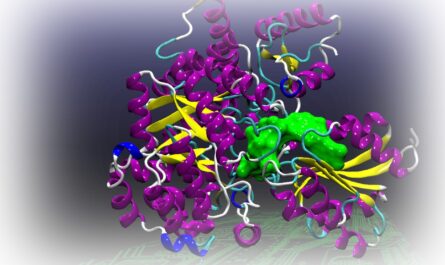New research published in the International Journal of Molecular Sciences has uncovered a surprising link between glaucoma and Alzheimer’s disease. Typically associated with blindness, glaucoma is now being connected to neurodegenerative dementias such as Alzheimer’s. The study highlights the presence of amyloid beta protein (Aβ), which is a neurodegenerative protein released by retinal ganglion cells, in both glaucoma and Alzheimer’s disease.
Glaucoma is characterized by the loss of retinal ganglion cells, which leads to permanent vision field impairment. The disease is thought to be neurodegenerative in nature, originating in the brain but manifesting as an eye condition. This supports the existence of a brain-eye axis. Neuroimaging techniques, such as magnetic resonance imaging (MRI), have revealed significant differences in the brain and optic nerve of glaucoma patients.
In individuals with glaucoma, MRI scans have shown losses of magnocellular tissues at the lateral geniculate nucleus (LGN) level, shrinkage and degeneration of the LGN, and increased LGN signal intensities. Additionally, alterations in the visual cortex, LGN, and optic nerve have been observed. These findings suggest a link between the severity of LGN atrophy and the severity of Alzheimer’s disease.
Further MRI observations in glaucoma patients have shown changes in mean diffusivity (MD) and fractional anisotropy (FA) values in the optic nerve and optic radiation, confirming the spread of the disease along the visual pathway. Global brain structural reconfiguration, indicated by higher values of global strength, global efficiency, and global clustering coefficient, has also been observed in glaucoma patients.
In Alzheimer’s disease, MRI scans have highlighted specific brain areas associated with the disease, such as the superior parietal lobule, hippocampus, inferior frontal gyrus, temporal gyrus, and insular cortex. These areas are involved in short-term memory and the early stages of Alzheimer’s. MRI has also revealed microstructural alterations, neuronal loss, and cortical atrophy in the medial temporal and parietal lobes of individuals with Alzheimer’s.
The researchers have found shared biomarkers between glaucoma and Alzheimer’s disease, suggesting a common underlying pathology. These shared biomarkers include posterior cortical atrophy (PCA) scores, which can be used to diagnose and monitor both glaucoma and Alzheimer’s disease. Genetic overlaps and causal associations have also been identified between glaucoma and optic nerve structural features, intraocular pressure, and brain structure at 19 sites. On chromosome 17, individuals with glaucoma, optic nerve degenerative features, and Alzheimer’s share a genetic locus associated with the microtubule-related tau protein, a known risk factor for Alzheimer’s disease.
While these findings are promising, there is still a need for more accurate and comprehensive biomarkers. Advanced neuroimaging techniques, combined with artificial intelligence, show potential in improving the diagnosis of glaucoma and accelerating research and development of treatments. By gaining a better understanding of the shared mechanisms between glaucoma and Alzheimer’s disease, personalized therapeutics may be developed in the future. This research brings us closer to finding effective treatments for both diseases and potentially preventing their progression.
*Note:
1. Source: Coherent Market Insights, Public sources, Desk research
2. We have leveraged AI tools to mine information and compile it



